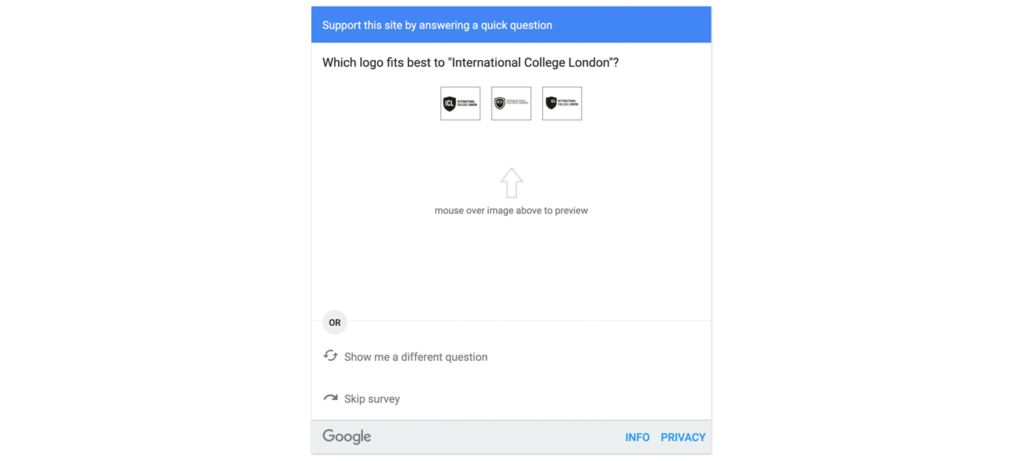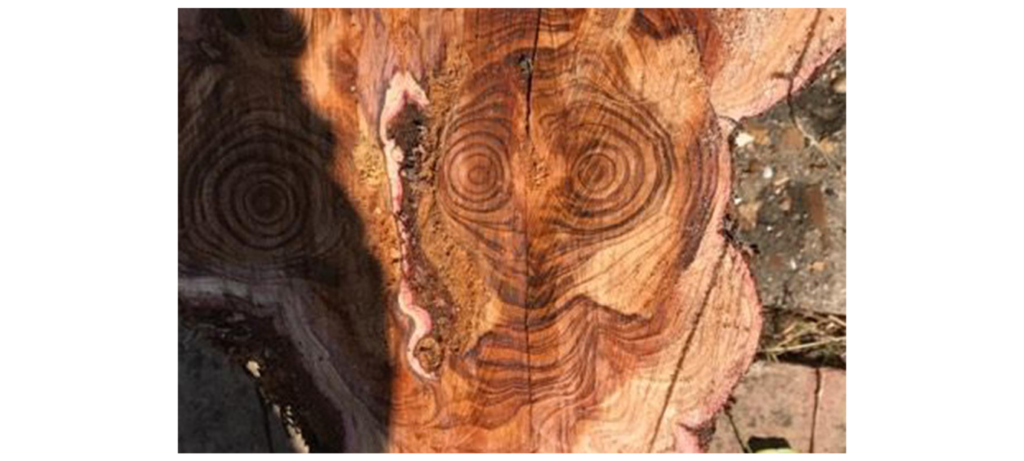“E.T. didn’t go home – he’s in a tree trunk in Blackfen” – an actual headline.
I love local news. It’s where the barrel gets a good scraping, and I get to learn where not to move to.
Like when a roll of tin foil was stolen from a Poundland in Preston. Or when that Scottish guy was touring New Zealand in a campervan and got burgled by a parrot. Real tragedy that one; it stole 1,400 New Zealand Dollars and ate his shaving cream.
But what does this have to do with your branding?
I was browsing the Bournemouth Echo one day, looking for a smooth groove of a story. Before I was allowed to read the E.T. tree trunk article, I was met with this:

I’ve seen a few of these surveys before, but this is the first time I’ve been asked to choose my preferred logo design. I want news about aliens, not a job to do. What’s to stop everybody just clicking on the nearest one to get past, and skewing the results?
It got me thinking; what is the right way to solicit feedback when developing a new logo? There isn’t an exact science, but the following six things stack the odds in your favour.
1. Choose your feedback group carefully
The South West Sydney Vikings won the 2018 unicycle hockey league because they were carefully selected. The Wollongong Wombats on the other hand, well let’s not go there…
Pick a group that includes:
- Clients
- People in the business
- Friends and family (provided you trust their opinion!)
Keep it small; it’s all about quality over quantity. You generally hit the sweet spot at around five people. Groups over 10 strong tend to produce more noise than value.
For the client segment of your group, Phil wrote about client boards at the start of the year in this piece, and his recipe for a good cake was:
- A mix of old and new clients
- Those you know are happy
- People who have previously provided constructive criticism
- Those who have a broad range of external experience in running businesses who you could learn from.
Since I snared you in with this whole E.T gimmick, let’s say something like: “Without choosing Elliott and Michael carefully, E.T would probably have been burgled by parrots, or been caught shoplifting tinfoil from a Poundland.”
Sorry.
2. Give context
You might have the best bunch of brains ever, but before you start showing them stuff, tell them clearly why you are undertaking this exercise.
Explain:
- Where you are at in the rebranding process
- What you hope to achieve
- Who this brand needs to resonate with.
Without this, people can’t view the designs through that lens, meaning you are likely to get distracting and unfocused feedback.
3. Remember who this is aimed at
Way back in the ice age of Yardstick when it was just myself, Michael and Phil in a broom cupboard, this piece was written with the key message: it’s not always about you.
And to this day it remains true. It doesn’t matter if you don’t like your logo, it matters that your client does.
This is important when gathering, and ultimately filtering, feedback.
Things like: “The colour palette is the same as my daughter’s Sunday league rival team”. It’s not always easy but try to think beyond yourself. It will free you, and always results in a stronger visual identity.
4. Be clear about what you’re asking for
If you want people to pick their preferred option, tell them.
The same goes for if you want people to pick apart the typeface, suggest alternative colours, or tell you the things they don’t like about it and what they would change.
We’ve all heard naughty quotes about opinions, but you get the idea. If you pop something on the table and say “discuss” you’re naturally going to get negative feedback because it’s the easiest kind to give.
To nurture constructive feedback, ask clear and direct questions, for example: “Which of these options are you more drawn to and why?”
And don’t be afraid to challenge the feedback. Going back to the designer and saying “they hated it” isn’t helpful. Let’s find out what the issue was, and how we can fix it.
5. Know what to discard
Once you have gathered enough feedback, it’s time to swing the BRITA (yes, all caps) about, and filter your data.
This step is essential because you can’t please everybody, and trying to do so will dilute any sense of character and personality that the visual identity has. Watch out for excessively strong wording.
“I hated it.”
Really? Not just a dislike, or a “meh”, it was actively hated? Of course, if everybody you show it to is left in tears, maybe it needs a tweak.
“It’s missing something, but I don’t know what.”
“It doesn’t look jazzy enough.”
There is a difference between bad and negative feedback. Acknowledging overly subjective answers is the first step to deciding how helpful (and representative of your wider audience) they are.
6. Disagree and commit
For smaller firms, and sole adviser businesses, the decision-making process is arguably easier.
For times when many bums sit in senior-level seats, it can be impossible for a unanimous vote to arrive.
Young up-and-comer Jeffrey Preston Bezos often mentions the merits of the “disagree and commit” principle, and he’s right. I say it often – a brand is what you make it. If your preferred option is put to sleep and a winner has emerged, embrace it.
You may need to kill your darlings, and when you do; don’t look back.
What next?
Garnering outside opinion during the rebranding, or initial branding process can often knock you off course.
The key is to remember why you are undertaking this exercise and to accept that pleasing everybody won’t be possible.
If you need any help designing a new visual identity or revisiting an existing one; get in touch. You can email hi@theyardstickagency.co.uk or call 0115 8965 300.
And yes, here is the picture of tree trunk E.T. – you are more than welcome.




